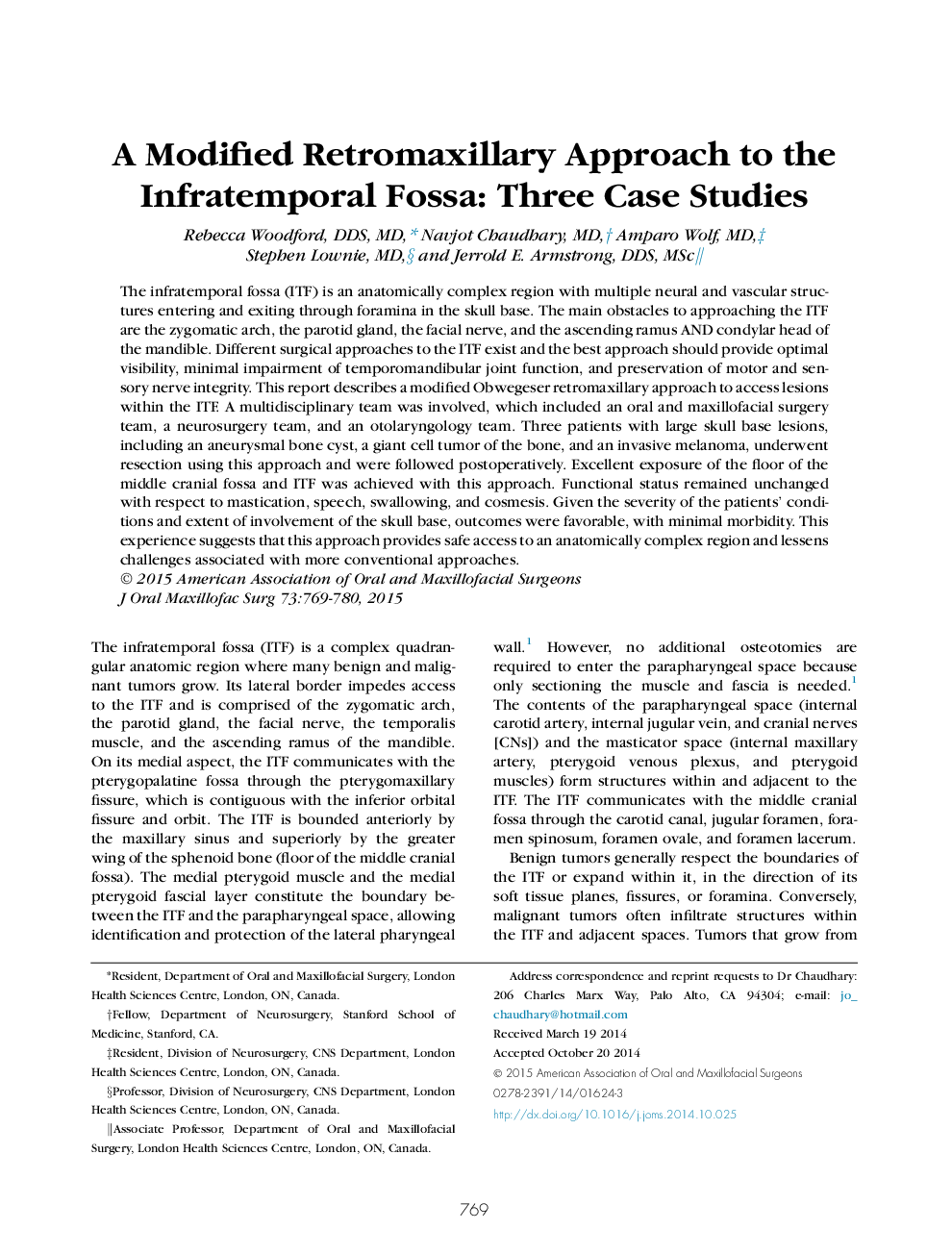| Article ID | Journal | Published Year | Pages | File Type |
|---|---|---|---|---|
| 3153161 | Journal of Oral and Maxillofacial Surgery | 2015 | 12 Pages |
Abstract
The infratemporal fossa (ITF) is an anatomically complex region with multiple neural and vascular structures entering and exiting through foramina in the skull base. The main obstacles to approaching the ITF are the zygomatic arch, the parotid gland, the facial nerve, and the ascending ramus AND condylar head of the mandible. Different surgical approaches to the ITF exist and the best approach should provide optimal visibility, minimal impairment of temporomandibular joint function, and preservation of motor and sensory nerve integrity. This report describes a modified Obwegeser retromaxillary approach to access lesions within the ITF. A multidisciplinary team was involved, which included an oral and maxillofacial surgery team, a neurosurgery team, and an otolaryngology team. Three patients with large skull base lesions, including an aneurysmal bone cyst, a giant cell tumor of the bone, and an invasive melanoma, underwent resection using this approach and were followed postoperatively. Excellent exposure of the floor of the middle cranial fossa and ITF was achieved with this approach. Functional status remained unchanged with respect to mastication, speech, swallowing, and cosmesis. Given the severity of the patients' conditions and extent of involvement of the skull base, outcomes were favorable, with minimal morbidity. This experience suggests that this approach provides safe access to an anatomically complex region and lessens challenges associated with more conventional approaches.
Related Topics
Health Sciences
Medicine and Dentistry
Dentistry, Oral Surgery and Medicine
Authors
Rebecca DDS, MD, Navjot MD, Amparo MD, Stephen MD, Jerrold E. DDS, MSc,
